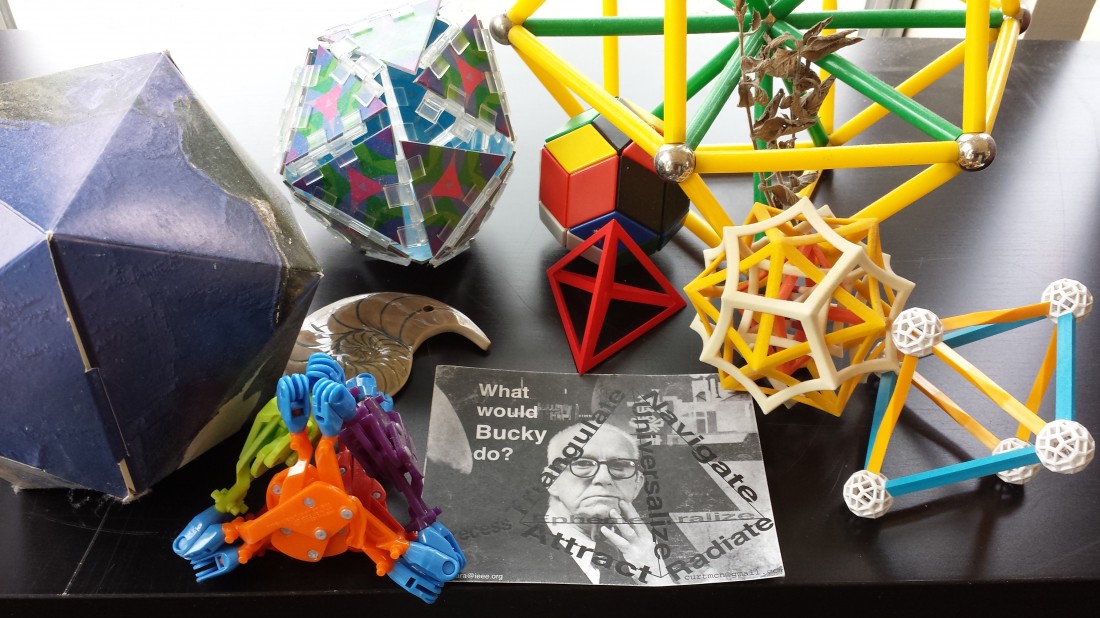Designs can be patterned after nature and Bucky Fuller embraced this idea.
“To [Buckminster] Fuller, a great technology had already been at work for millions of years — Nature. To look at the way “she” designs the universe was to unlock the most useful direction one could take in designing the artifacts that would make the world work for humanity. Nature’s design was fluid, ephemeral, beautifully patterned. Nature’s technology was dynamic, lightweight, and driven by a functional imperative — optimum efficiency.” Bonnie De Varco
The beauty of the world arises from fundamental principles that govern how material, energy and information are arranged. These principles are straight-forward to learn and can be applied to all kinds of designs and organizations. Using these principles and patterns can enhance your practice and work products. Designs created this way are efficient, coupled to larger systems, and take the future into account.
Universal design principles are found at all levels of scale:
— Patterns: All structures are composed of sub-systems, and these can be seen as patterns. Perceiving patterns and systems can lead to better design solutions.
— Energy and systems coupling: Forces in nature interact, and do not cancel each other. The excess energy from interactions is what connects systems. Connecting systems is the key to effective designs and sustainable solutions.
— Systems: Systems are composed of coupled components and are greater than the sum of their parts. The components are coupled together via relations to form patterns
— Metaphysical know-how: Universe is physical + metaphysical. Metaphysical knowledge can be described as generalized principles that are true everywhere and every-when. Wealth is metaphysical knowledge.
— Trimtabs: A small change can have a significant effect if it affects larger forces. This type of change is known as a trimtab.
— The shape of nature. There are a fixed set of possible arrangements that underlie all systems. Once these are known and understood, more complex systems can be built from building blocks.
Hands-on practice
The best way to explore and learn these design principles is through hands-on application.
- Start by enclosing space and test your structure to see if it is stable.
- Examine the nodes where the edges or relations come together, and think about how those points of contact can connect to other systems.
- Sub-divide your structure along each edge, and connect those points together. Do you see lower levels of structure emerge?
- Consider how the edges or relations in your structure or system can be energy, material, or information. Can you model your organization (or yourself) this way? How can that model connect to networks and other systems?
- Play with the building blocks to create systems of interest to you.
Curt McNamara’s (article author) new course Nature’s Design Rules for Sustainability is open for registration. It runs for 10 weeks from June 9-August 15 and is offered 100% online.
Image courtesy of Curt McNamara
